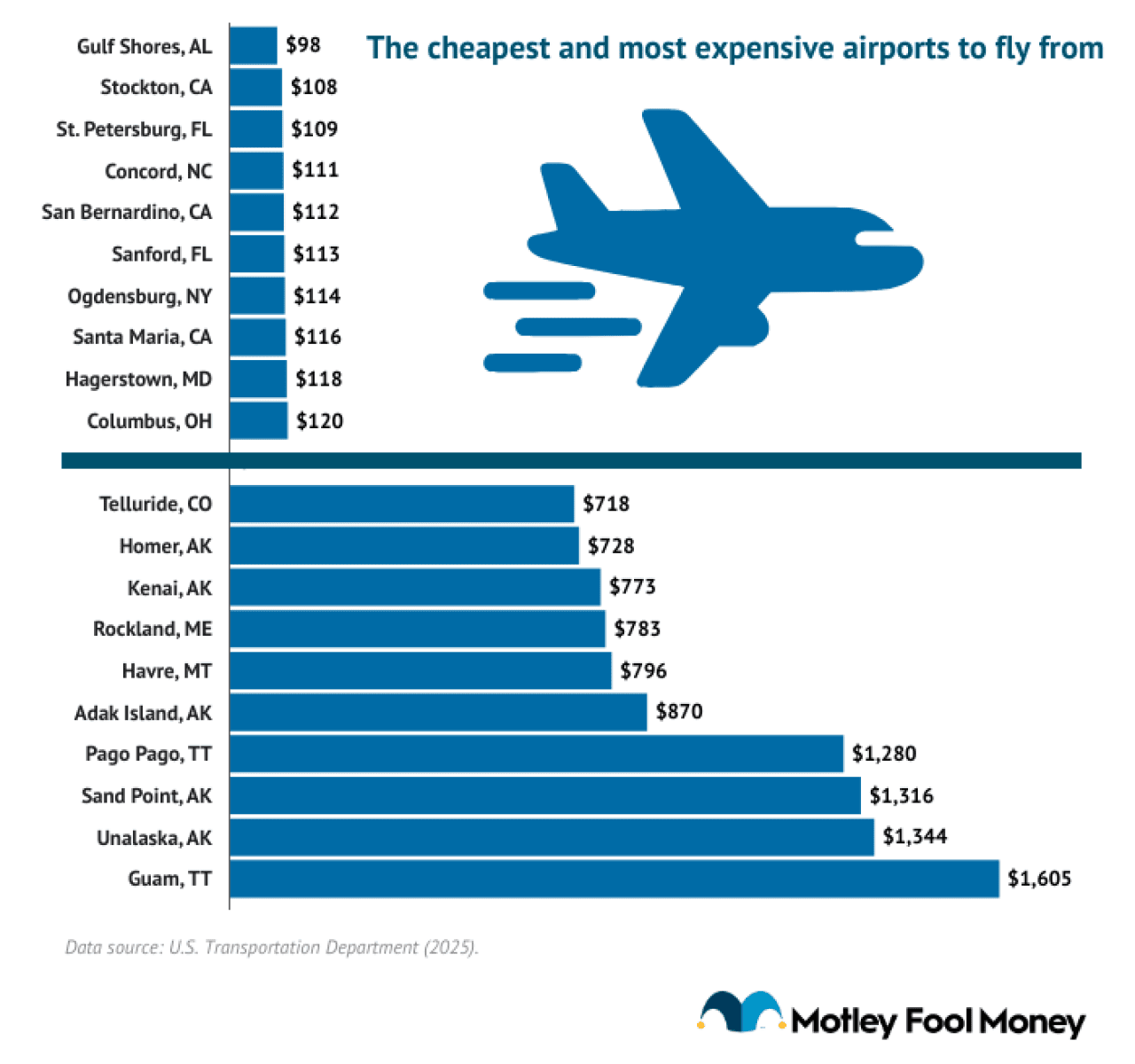A record 81.8 million Americans are expected to travel for Thanksgiving this year, according to AAA, with 6 million traveling by plane. AAA projected that nearly 8 million travelers flew for Christmas last year. Those are some of the highest holiday air travel counts ever recorded, and it comes as airfare remains higher than pre-COVID-19 pandemic prices.
Motley Fool Money analyzed airfare data and travel trends to help consumers understand holiday flight pricing.
Travelers planning to fly this holiday season may find solace in the fact that airfare has held steady in 2025, but when you choose to depart and return, where you fly to and from, and whether you can utilize some of the perks found among the best travel credit cards, including ones that offer free check bags and lounge access, can have an outsize impact on what you pay.
AAA’s booking data shows that the average Thanksgiving round-trip domestic flight is around $700, which is in line with last year's figures. That cost reflects what travelers paid when they booked their trips, not last-minute pricing. For Christmas flights, AAA estimated the average cost in 2024 to $830 for domestic flights and $1,630 for international routes.
Flying on the actual holiday is typically cheaper, but the return trip can still put a strain on budgets. The Sunday and Monday after Thanksgiving remain two of the most expensive travel days of the year, as millions head home at the same time.
Some shorten or extend their holiday plans to dodge peak return periods, which is one of the most reliable ways to cut overall trip costs.
Outside of the holiday rush, the average domestic plane ticket in the U.S. is $386, according to the most recent data from the Department of Transportation. Prices have hovered in the mid-$300s for more than two years after rebounding from the sharp pandemic-era drop, when airfare fell to near $350.
Domestic airfare fluctuates with demand, fuel costs, seat capacity, and competition on a given route, all of which intensify during the holiday season, leading to higher prices. Those same factors influence airline profitability, which is why many investors track airline stocks during high-traffic months.
Holiday travelers flying from smaller or remote airports face the steepest premiums. Some of the highest average domestic fares in the country originate from:
These airports tend to have limited carriers and fewer seats, which drives up prices year-round and especially during peak travel.
By contrast, the secondary and regional airports served by low-cost carriers offer the cheapest fares, including:

Travelers leaving from large hubs like LAX, Chicago O’Hare, or Denver International typically see fares closer to the national average.
Long-distance routes or those connecting remote cities are the priciest. Among the most expensive U.S. city pairs are:
At the low end, ultra-low-cost carriers dominate the cheapest routes, which include:
These routes often serve leisure travelers between midsize cities, places where holiday travel spikes may still allow opportunities for low fares.

The average international economy ticket from the U.S. is $1,217, according to FCM and Corporate Traveler, though holiday pricing varies dramatically by destination. Flying to Canada or Mexico is typically far cheaper than long-haul trips to Europe, Australia, or Asia.
Hopper, a travel booking company, notes that “good deals” differ by region, with the steepest holiday price increases showing up on transatlantic and transpacific routes.
A few strategies can help travelers bring down costs, even during the busiest weeks of the year:
Holiday airfare hasn’t surged dramatically compared to last year, but record demand means travelers can expect elevated prices on the busiest days and at the most crowded airports. A little planning and flexibility can translate into meaningful savings and help keep your holiday travel budget under control.
This story was produced by Motley Fool Money and reviewed and distributed by Stacker.

Reader Comments(0)